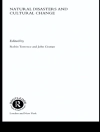Any inference drawn from plain remains recovered from archaeological sites is based on the classes of such remains that are, at present, possible to identify. These are most commonly seeds, the hard parts of some fruits, wood and pollen. If samples contain a high proportion of charred remains that are unidentifiable using present methods of identification, any inference drawn from those remains will be biassed. The charred remains of vegetative organs, roots, tubers, rhizomes, corms etc. are rarely identified from archaeological sites. This is despite the often frequent occurrence of such tissues in archaeological samples. Methods for their identification have not been widely developed, and so it is perhaps understandable that many such remains are wrongly categorized with what really are unidentifiable remains.This manual, for laboratory use, presents a new methodology for the identification of the charred remains of roots and tubers from archaeological sites. The fresh and charred morphology and anatomy of over seventy taxa are described and fully illustrated with 590 scanning electron micrographs.
Hather Jon G. Hather
Archaeobotanical Guide to Root & Tuber Identification [EPUB ebook]
Archaeobotanical Guide to Root & Tuber Identification [EPUB ebook]
购买此电子书可免费获赠一本!
语言 英语 ● 格式 EPUB ● 网页 164 ● ISBN 9781785708404 ● 出版者 Oxbow Books ● 发布时间 2017 ● 下载 3 时 ● 货币 EUR ● ID 6185585 ● 复制保护 Adobe DRM
需要具备DRM功能的电子书阅读器












